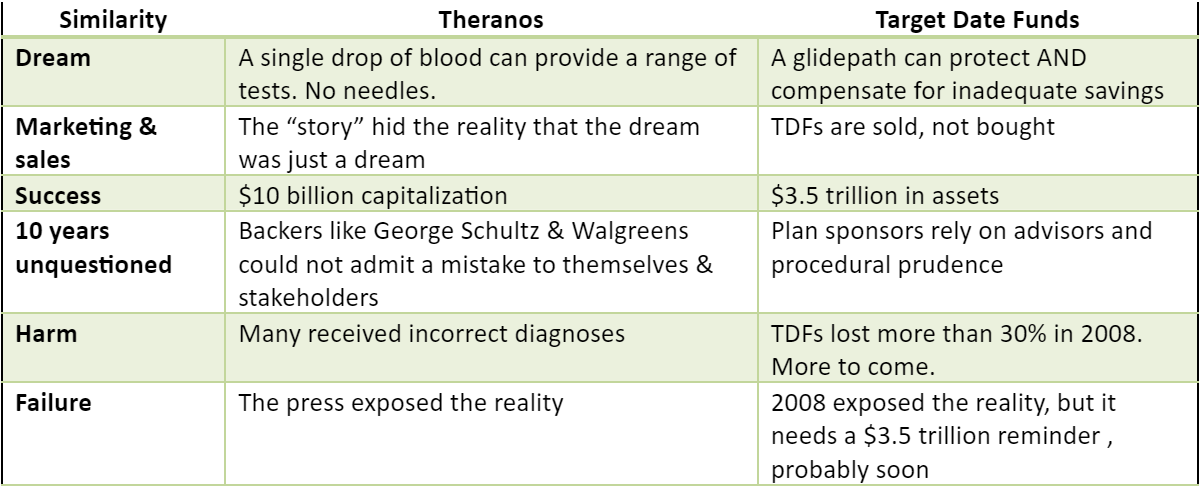In 2003, at age 19, Elizabeth Holmes founded Theranos, and it became a $10 billion company by 2014. But it was a fraud. Aspects of target date funds mirror the Holmes story.
I recommend the Dropout series on Hulu. It tells the story of Elizabeth Holmes’s rise to fame and fall to disgrace.
The Elizabeth Holmes story has lessons about target date funds. Are you ready?
Q1 2022 hedge fund letters, conferences and more
The Elizabeth Holmes-Theranos story
Elizabeth Holmes dropped out of Stanford at age 19 to follow her dream of becoming an entrepreneur, hence the Dropout title. In 2003, she founded Theranos (the god of blood in ancient Greek mythology) to develop breakthrough blood-testing equipment that would run a range of tests on a small amount of blood, extracted with a pinprick rather than a needle.
As the TV series documents, the device was Holmes’ dream, one that might exist someday. But she chose to “fake it until you make it.”
She faked it and made a fortune, but harmed many.
By 2014, Theranos became a $10 billion company, and Holmes became one of the richest young women ever. But the equipment didn’t work. It was a fraud. Once the fraud was exposed, lawsuits ensued that bankrupted Holmes and her company. It’s the story of a dreamer who got herself caught up in a lie that worked until it didn’t.
The target-date fund story
The TV series portrayed Elizabeth Holmes as a dreamer who desperately wanted to believe that the device she envisioned could be developed. She hired scientists who shared the dream but warned her that it will take decades to develop. It became a “chicken and egg”: her dream needed investors, but they wouldn’t invest in a dream.
In many ways, target date funds (TDFs) followed the Dropout script, as shown in the following table.

It all hinged on “the dream.” TDFs were supposed to protect those near retirement, but they were and are invested 85% in risky assets – 55% equities plus 30% long-term bonds. This exposure is justified by an objective to compensate for inadequate savings and longevity.
Fiduciaries are obsessed by the dream because they’ve bought into it.
Read the full article here by Ron Surz, Advisor Perspectives.

